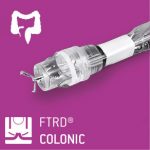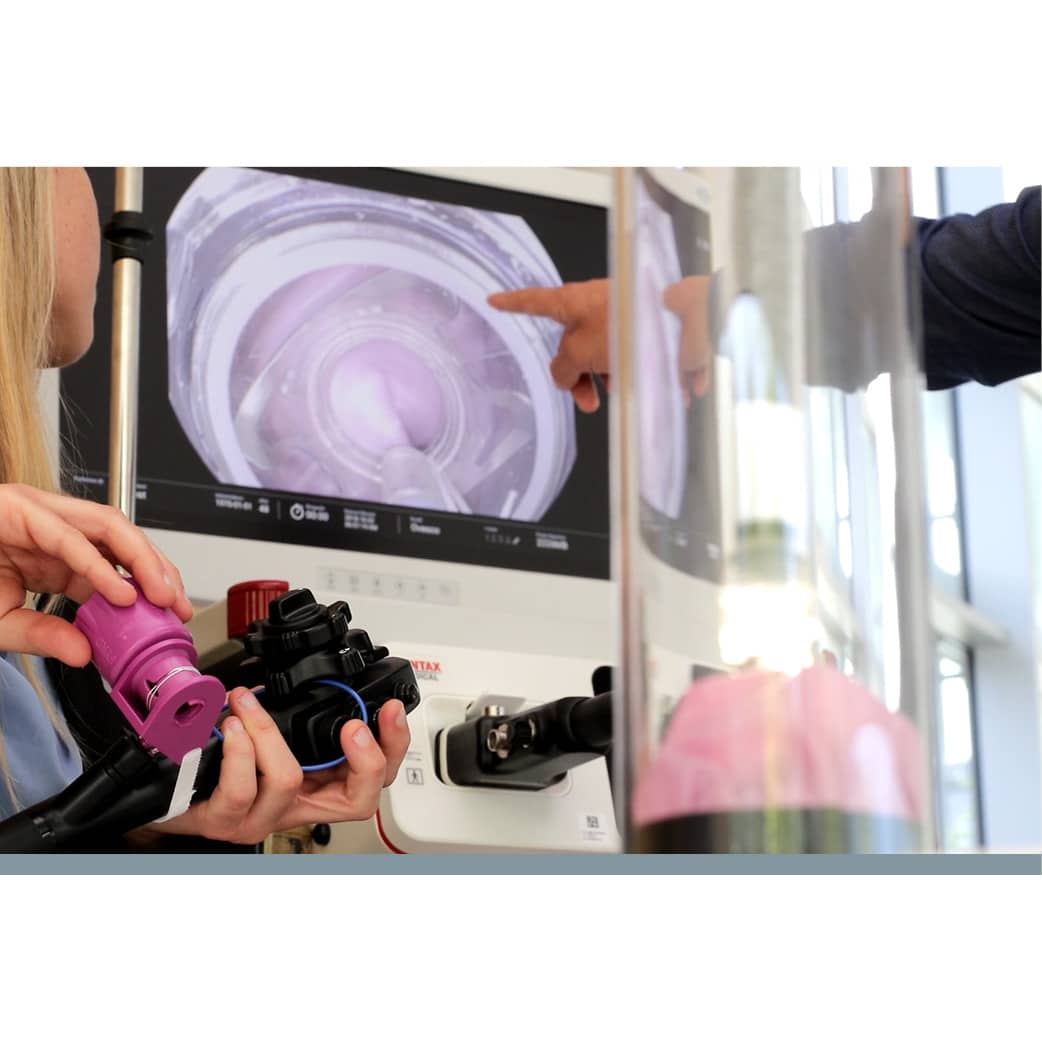FTRD® System in T1 colorectal cancer
FTRD® System in T1 colorectal cancer: a potential treatment alternative to surgery
In a retrospective multicenter study, the Dutch EFTR registry was evaluated with respect to the clinical applicability and performance of the FTRD System in T1 colorectal cancer (CRC). High rates for overall technical success (87.0%) and R0 resection (85.6%) demonstrate the safety and efficacy of FTRD for resection of small T1 CRC, both as primary and secondary treatment.
L. Zwager et al., Department of Gastroenterology and Hepatology, Amsterdam University Medical Centers, Amsterdam, Netherlands, aimed to determine clinical and short-term oncological outcomes of EFTR for T1 CRC ≤20 mm.
The analysis included 330 consecutive EFTR procedures in 324 patients (median age: 70 years; 65.1% male), prospectively recorded in the Dutch EFTR registry between November 2015 and April 2020. Primary outcomes of the study were technical success (number of macroscopic complete en-bloc resections) and R0 resection (tumor-free lateral and deep resection margins histopathology, including a macroscopically complete scar resection without histological evidence for residual lesion or cancer). Secondary outcomes were histological risk assessment (R0 resection without high-risk features in cases of residual cancer), curative resection, adverse events, and short-term outcomes.
The evaluation showed an overall technical success rate of 87.0% (287/330; 95% confidence interval [CI] 82.7%–90.3%), histological R0 resection rate of 85.6% (274/320; 95%CI 81.2%–89.2%), and curative resection rate of 60.3% (193/320; 95%CI 54.7%–65.7%). For lesions > 20 mm, R0 resection was 80.0% and for lesions ≤ 20 mm 85.9% (p=0.60). Median diameter of the resected specimen was 24 mm (IQR 20–29). In the primary treatment group (n=132), including optically suspect T1 CRC and non-lifting lesions with histology-proven adenocarcinoma, technical success was 118/132 (89.4%; 95%CI 82.5%–93.9%) and R0 resection was 105/128 (82%; 95%CI 74.0%–88.0%). For secondary treatment (n=198) after previous R1, Rx, or R0 < 1 mm resection, technical success was 169/198 (85.4%; 95%CI 79.5%–89.8%) and R0 resection was 169/192 (88.0%; 95%CI 82.4%–92.1%).
Histological risk stratification was possible in 99.3% (134/135; 95%CI 95.3%–99.9%). For primary resection of T1 CRC, the curative resection rate was 23.7% (23/97; 95%CI 15.9%–33.6 %) and 60.8% (59/97; 95%CI 50.4%–70.4%) after excluding deep submucosal invasion as a risk factor. The risk of severe adverse events was 2.2% (7/320). Two immediate perforations were caused by incorrect deployment of the clip before resection and five delayed perforations occurred within 1–8 days post-EFTR. All perforations could be treated surgically (4/7 by surgical suturing and 3/7 by oncological sigmoid resection, with no residual cancer apparent on histopathology). Additional oncological surgery was performed in 15.3% (49/320) of cases, with residual cancer present in 22.4% (11/49) of these cases. Endoscopic follow-up was available in 82.6% (200/242) of patients, with a median follow-up time of 4 months and a residual cancer rate of 0.5% (1/200) following an incomplete resection.
The authors conclude that EFTR is relatively safe and effective as primary and secondary treatment for resection of small T1 CRC. Due to the high overall R0 resection rates and optimal histopathology, FTRD can be considered a safe “excisional biopsy” that allows for more precise decision-making and patient-centered multidisciplinary discussion. Thus, EFTR expands endoscopic treatment options for T1 CRC and may reduce surgical overtreatment. Long-term outcomes should be analyzed in further studies.
Endoscopic full-thickness resection of T1 colorectal cancers: a retrospective analysis from a multicenter Dutch eFTR registry
Zwager LW, Bastiaansen BAJ, van der Spek BW, Heine DN, Schreuder RM, Perk LE, Weusten BLAM, Boonstra JJ, van der Sluis H, Wolters HJ, Bekkering FC, Rietdijk ST, Schwartz MP, Nagengast WB, Ten Hove WR, Terhaar Sive Droste JS, Rando Munoz FJ, Vlug MS, Beaumont H, Houben MHMG, Seerden TCJ, de Wijkerslooth TR, Gielisse EAR, Hazewinkel Y, de Ridder R, Straathof JA, van der Vlugt M, Koens L, Fockens P, Dekker E; Dutch eFTR Group.
Endoscopy. 2022 May;54(5):475-485.
ncbi.nlm.nih.gov/34488228/
 |
 |


 Deutsch
Deutsch  Français
Français 